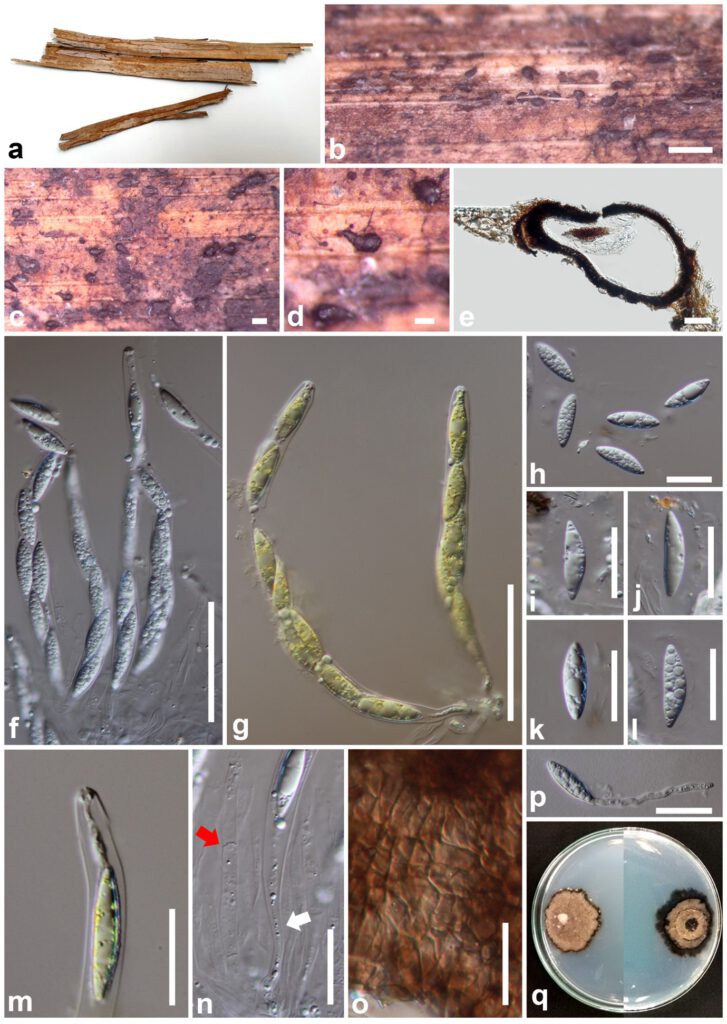Distoseptispora licualae Konta & K.D. Hyde. sp. nov.
MycoBank number: MB 559680; Index Fungorum number: IF 559680; Facesoffungi number: FoF 10826;
Etymology: Refers to the name of the host genus, Licuala.
Holotype: MFLU 15-0014.
Saprobic on dead leaves of Licuala glabra. Sexual morph: Ascomata 250–300 μm long, 120–140 μm diam., solitary or gregarious, semi-immersed to superficial, perithecial, sub-globose to ellipsoidal, dark brown, ostiolate, with a short neck through host surface. Peridium 14–33 μm (x̄ = 21 μm, n = 10), thick coriaceous, comprising brown cells of textura angularis. Paraphyses 2–6 μm (x̄ = 4 μm, n = 30) wide, long, cylindrical, septate, hyaline, smooth-walled. Asci 117–210 × 8–15 μm (x̅ = 158 × 11 μm, n = 25), 6–8-spored, cylindrical, with a short pedicel, obtuse at the apex, apex with J- apical ring. Ascospores 20–30 × 5–10 μm (x̅ = 24 × 7 μm, n = 100), overlapping, uniseriate, inequilateral to fusiform, straight, rarely slightly curved, hyaline, aseptate, smooth-walled, guttulate, thin-walled, with a thick mucilaginous sheath. Asexual morph: Undetermined.

Fig. XX Distoseptispora licualae (MFLU 15-0014, holotype). a Herbarium specimen. b, c Appearance of ascomata on host substrate. d Close up of ascoma. e Section of ascoma. f Asci. g Asci stain in Melzer’s reagent. h–l Ascospores. m J- apical ring. n Paraphyses (septate pointed by red arrow) and long stalk pointed by white arrow. o Peridium. p Germinated ascospore. q Colony on MEA. Scale bars: b = 500 μm, c = 200 μm, d = 100 μm, e, h–p = 20 μm, f, g = 50 μm.
